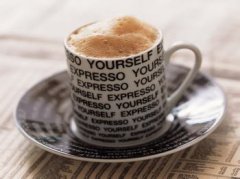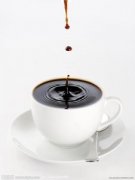The History of European Culture on the Coffee Table II. The Founding Period of Coffee House
Drank a cup of coffee for 350 years.
-you can read the newspaper and play pool.
In the early days of cafes, coffee shops, whether "Persian", "Egyptian", "Syrian" or "Turkish", were at first a paradise for the underclass of the West and wandering strangers.
But coffee alone can't attract many guests, so cafes often have services other than coffee, one is to provide newspaper reading, and the other is billiards.
You know, newspapers were very rare at that time, so people who came to the cafe could drink coffee for very little money and then read expensive newspapers. Many little-known cafes attracted a lot of guests in this way, as was the case with Kalman, the little-known "Scholar Cafe" in Vienna in 1719.
Billiards is another popular activity in European cafes. In fact, pool tables have already been set up in the earliest cafes, and in the era of "Hugoman Cafe", cafes have become a "place of wind and clouds" for billiards enthusiasts. In the Hugeman Cafe, there is a hall with three regular tables, and the coffee tables around the tables are always full of spectators. Outside the hall, the coffee garden overlooking the Danube and the city is full of celebrities, with well-dressed and well-mannered guests everywhere under the trees before the flowers. With this entertainment function, the cafe has become a place of entertainment for citizens, and an open social salon has begun to enter the center of life in Vienna conspicuously.
At the same time, the guests of the cafe began to change quietly, rebellious young people, freedom-loving scholars, businessmen, cultural figures, urban bourgeois class. All began to join the coffee drinking team.

Important Notice :
前街咖啡 FrontStreet Coffee has moved to new addredd:
FrontStreet Coffee Address: 315,Donghua East Road,GuangZhou
Tel:020 38364473
- Prev

The third in the History of European Culture on the Coffee Table the first coffee shop in Paris
After 350 years of drinking a cup of coffee-the first coffee shop in Paris, which was once a bathroom, Procope is the oldest coffee shop in Paris, but its founder is not French, but Mr. Francesco Procopio Dei Coltelli from Palermo, Sicily, Italy, named after its owner. However, the original P
- Next

The History of European Culture on the Coffee Table: the Evolution of Coffee Tent
It took 350 years to drink a cup of coffee-the evolution of coffee tents the first generation of cafes were humble shops, and later mobile coffee tents appeared in the Arab region, mainly for business travelers and passers-by, but in Europe in the early 18th century, it has become a fashionable place for the upper-middle class. At that time, dignitaries and dignitaries were keen to go to the suburbs
Related
- How did the Salvadoran coffee industry develop in Central America?
- What exactly does the golden cup extraction of coffee mean?
- The Origin of Coffee flower
- [2023 Starbucks World Earth Day] there are more meaningful things besides free Starbucks coffee!
- What kind of coffee is there in Spain? 9 Flavors of Spanish Coffee
- Aromatic African coffee| Kenya's coffee culture and historical production area
- Liberica Coffee Bean knowledge: the characteristics of Liberian Coffee beans of the three original species of Coffee beans
- The origin and formula of Spanish latte introduces the taste characteristics of Bombon coffee in Valencia, Spain.
- How to adjust the solution of over-extracted coffee
- What is the tasting period of coffee beans? What is the period of coffee and beans? How should coffee wake up and raise beans?

